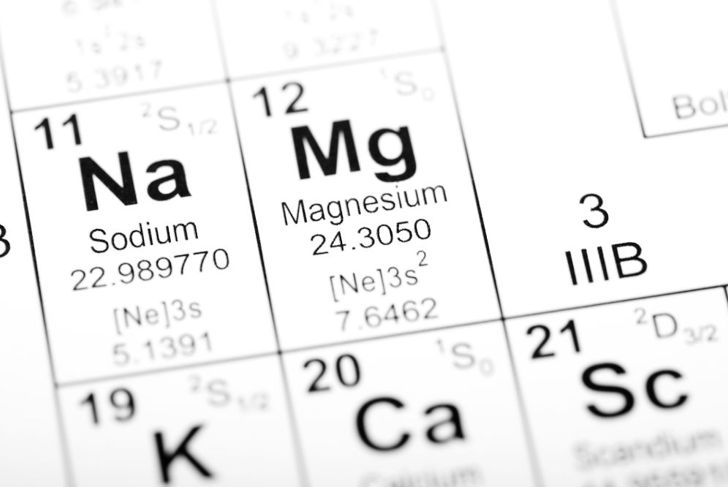People seeking to ease acid reflux and digestive discomfort often turn to antacids to neutralize the excess stomach acid responsible for indigestion and some ulcers. There are many types of antacids, and doctors typically nod to their occasional use, but medical experts urge caution for those who reach for them too often due to their potential risks.
Benefits with Risks
Antacids are formulated to soothe heartburn almost immediately by normalizing the pH in the esophagus, stomach, and digestive tract. In some cases, this temporary treatment triggers a boomerang effect called acid rebound. Research suggests that prolonged daily intake of antacids can lead to acid hypersecretion that could last up to several weeks.
Aluminum Hydroxide
Aluminum hydroxide, typically taken in liquid form, is weak and slow-acting compared to other antacids, and its efficacy varies widely among commercial brands. The compound counteracts magnesium’s diarrheal effect and deactivates pepsin, the gastric digestive enzyme. Chronic overuse could leach the body of phosphate, however, leading to bone diseases such as osteoporosis. Long-term use could promote a buildup of aluminum, which can damage the brain.
Calcium Carbonate
Calcium carbonate, available in tablet, capsule, and liquid form, is the strongest usable antacid for the relief of acid indigestion and heartburn. It has been used for centuries to calm upset stomachs and can totally neutralize stomach acid, but calcium carbonate should not be taken for more than two weeks without medical advice.
Magnesium Hydroxide
Magnesium hydroxide or milk of magnesia, is a potent, fast-acting antacid. It works by reducing stomach acid secretion and drawing water from intestinal tissue into the gut to promote the elimination of waste. This explains the laxative effect of the compound. People taking this medication should drink plenty of water to avoid dehydration. Most healthy individuals do not experience adverse effects from taking magnesium hydroxide, but overuse can cause problems.
Sodium Bicarbonate
Sodium bicarbonate — baking soda — is a common ingredient in commercial antacids. It is short-acting and effervescent. Bicarbonate interacts with hydrochloric acid in the stomach to release carbon dioxide gas, commonly as a belch. However, its high sodium content makes it unsuitable for individuals who need to restrict sodium intake. Overuse of this antacid could lead to systemic alkalosis, a pH imbalance.
H2 Blockers
Histamine H2-receptor antagonists treat and prevent the recurrence of certain ulcers by decreasing acid secretion from the stomach lining. Commonly known as H2 blockers, these medications come as tablets, capsules, and powders that work slowly to provide long-lasting antacid effects. However, the medications are associated with increased lethargy, confusion, and a higher risk of intestinal infection, kidney disease, and bone fracture.
Complications
Consuming large amounts of antacids containing aluminum, calcium, magnesium, and sodium could lead to abnormally high levels of these minerals in the body, which can cause constipation or diarrhea. Some people with kidney disorders experience excess fluid buildup, reduced kidney function, kidney stones, or nerve damage. H2 blockers and PPIs reduce the production of stomach acid over time and can inhibit the absorption of nutrients.
Potential Interactions
Antacids can affect the absorption and effectiveness of other drugs. Take other medicines either one hour before or four hours after taking an antacid. People on medications for hypertension, heart disease, or kidney dysfunction should consult a pharmacist or doctor before taking antacids, as should those using calcium supplements.
At-Home Alternatives
Various simple, homeopathic remedies can provide relief. A teaspoon of baking soda mixed with eight ounces of water can help neutralize stomach acid. Eating bananas, apples, or melons could alleviate acid reflux episodes. Ginger and chamomile teas help balance stomach acid levels and reduce stress that contributes to GERD symptoms.
When to Call a Doctor
In some cases, using antacids masks a serious condition. It is important to keep track of how often you are taking the medication; if you require it more than a few times each month for a few months, talk to a health care professional. People who have a family history of Barrett’s esophagus, esophageal cancer, or gastric cancer should also check with a doctor before using antacids. Additionally, seek medical attention if these symptoms occur:
- Rectal bleeding or darkened stool
- Pain in the lower belly, side, or back
- Difficulty swallowing
- Unexplainable weight loss
- Severe diarrhea
- Nausea and vomiting
- Shortness of breath or chest pain
- Fever with abdominal pain
- Cramping or bloating

 Home
Home Health
Health Diet & Nutrition
Diet & Nutrition Living Well
Living Well More
More




















